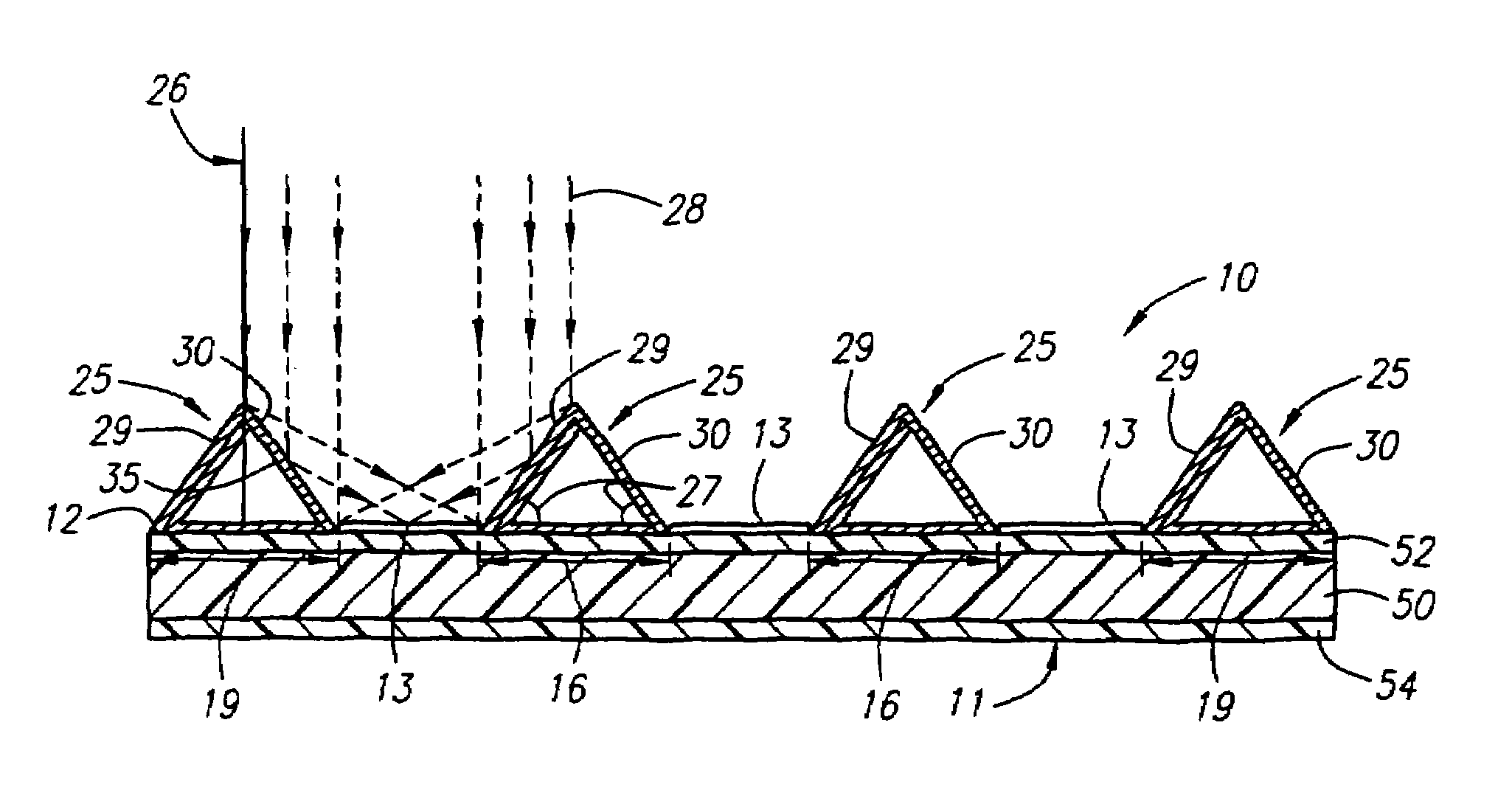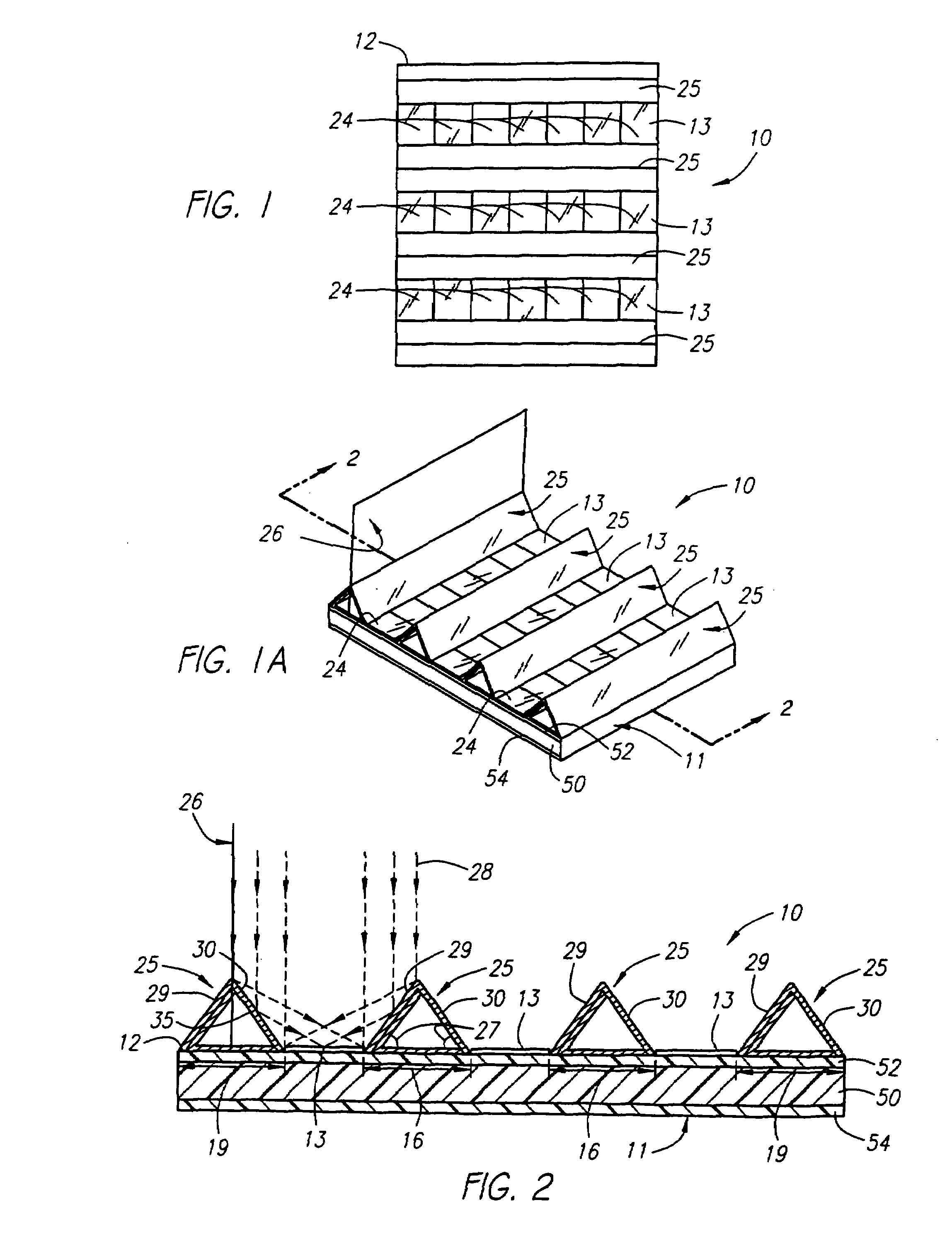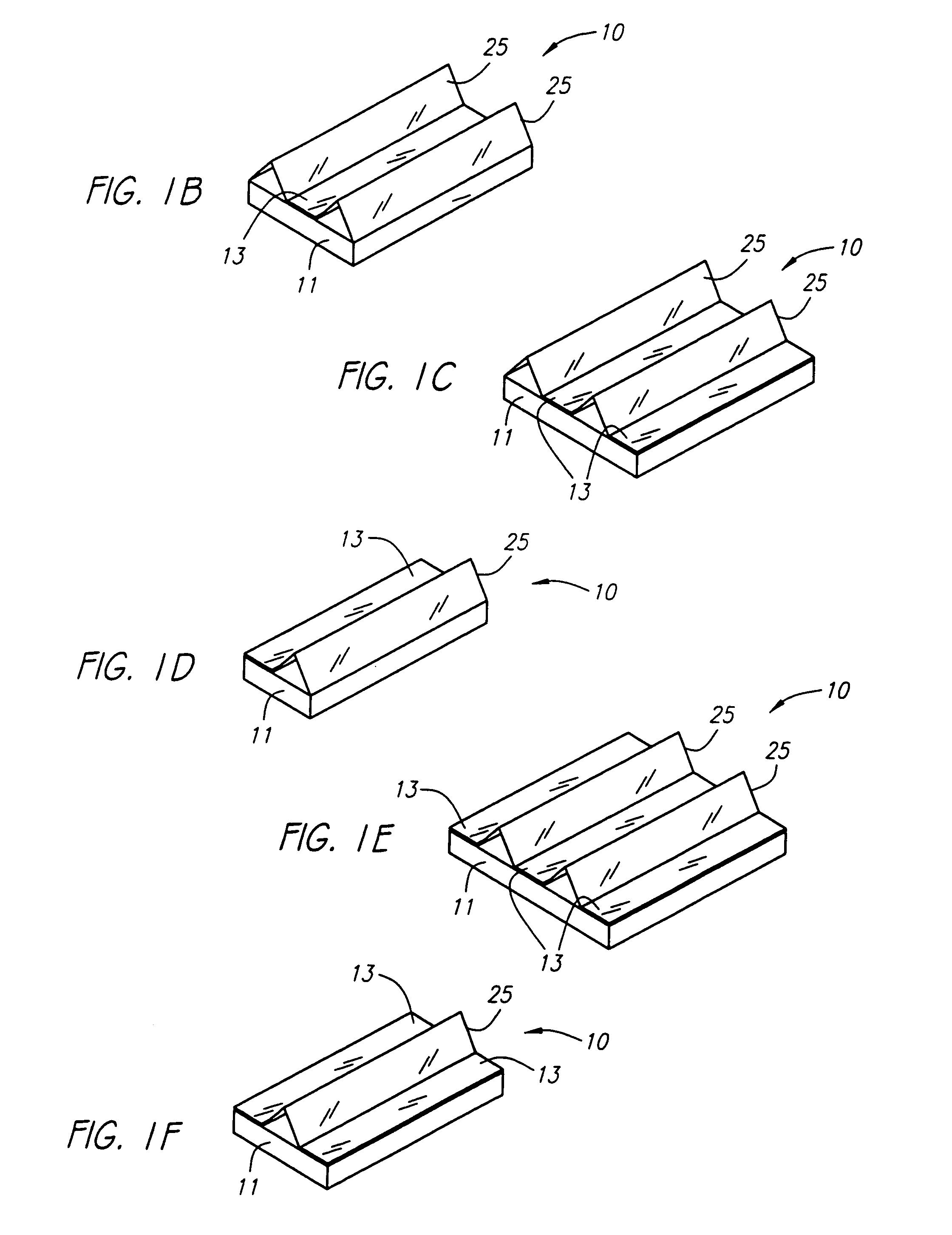Solar cell array
a solar array and solar cell technology, applied in the field of solar cell arrays, can solve the problems of reducing efficiency, reducing volume during launch, and the most expensive component of solar array, and achieve the tightest possible packing of solar panels, reduce volume, and reduce the effect of volum
- Summary
- Abstract
- Description
- Claims
- Application Information
AI Technical Summary
Benefits of technology
Problems solved by technology
Method used
Image
Examples
Embodiment Construction
[0049]A preferred embodiment of a solar panel 10 according to the present invention is shown in FIGS. 1, 1A, and 2.
[0050]Solar panel 10 comprises a base 11 having a front surface 12, a plurality of generally parallel rows 13 of solar cells 24 mounted on the front surface 12 of the base 11, and a plurality of elongated collapsible, self-deploying reflectors 25 mounted on the front surface 12 of the base 11. As shown, rows 13 of solar cells 24 and reflectors 25 are preferably mounted on the front surface 12 of base 11 in an alternating fashion. Adjacent rows 13 are, therefore, preferably spaced apart by spacings 16. Edge spacings 19 are also preferably provided next to the two outside rows 13. Elongated reflectors 25, which comprise two reflective sides 29, 30, are then mounted in the spacings 16 provided between the rows 13 and in the edge spacings 19 provided at the edges of the base 11. In this manner, a reflector 25 is interposed between each of the adjacent rows 13 of solar cells...
PUM
 Login to View More
Login to View More Abstract
Description
Claims
Application Information
 Login to View More
Login to View More - R&D
- Intellectual Property
- Life Sciences
- Materials
- Tech Scout
- Unparalleled Data Quality
- Higher Quality Content
- 60% Fewer Hallucinations
Browse by: Latest US Patents, China's latest patents, Technical Efficacy Thesaurus, Application Domain, Technology Topic, Popular Technical Reports.
© 2025 PatSnap. All rights reserved.Legal|Privacy policy|Modern Slavery Act Transparency Statement|Sitemap|About US| Contact US: help@patsnap.com



